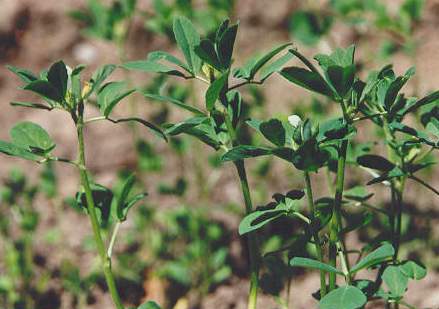|
|||||
|
|||||||
|
    An initiative of :Stichting Food-Info
|
| Food-Info.net> Food Products > Spices Fenugreek (Trigonella foenum-graecum)Plant familyFabaceae (bean family) Botanical synonyms- OriginFrom the Mediterranean to China . Used plant partThe brownish-yellow seeds of rhombic shape. In India also the fresh leaves are eaten and considered a very tasty vegetable. The leaves are prepared like spinach, or dried and used as a flavouring. Sensoric qualityBitter and aromatic. Main constituentsFenugreek contains only minute quantities of an essential oil. In the essential oil, 40 different compounds were found, of which a hemiterpenoid-lactone, sotolon (3-hydroxy-4,5-dimethyl-2(5H)-furanone), seems to be the most important aroma component; furthermore, n-alkanes, sesquiterpenes, alkanoles and lactones were reported . Among the non-volatile components, the furostanol glycosides are probably responsible for the bitter taste; among the several more compounds yet identified, sterol- and diosgenin derivatives (of potential interest for the pharmaceutical industry) and trigonellin (N -methyl-pyridinium-3-carboxylate, 0.4%) are most worth noting.
 Fenugreek plants UseFenugreek is an ancient spice, although currently not much known in the West; it has been grown as a medicinal plant in Europe during the Middle Ages. Today, many people in Western countries seem to dislike its flavour, which they claim to be goaty and bitter. It is now mostly used in the West, Central and South Asia; in India, is is popular for pickles. Dry roasting can enhance the flavour and reduce the bitterness, provided care is taken not to overheat the seeds. Small amounts of fenugreek should be found in good curry powders. Fenugreek is also popular in the South of India and appears in the ubiquitous Tamil spice mixture sambaar podi. Lastly, the bitter-aromatic seeds constitute an essential part of the Bengali five spice mixture panch phoron. Fenugreek leaves are an important spice from Western Asia to Northern India; for example, dried fanugreek leaves appear in the spice mixture from Georgia, khmeli-suneli. In India, they are sometimes found in Northern-style yeast bread (then called methi naan ). Iran has a particularly rich tradition in cooking with fenugreek leaves; among the most famous examples is ghorme sabzi , a thick sauce made from fresh or dried vegetables (leek, onion, occasionally beans) and herbs (fenugreek, parsley, mint; some recipes also call for chives and coriander leaves). The sauce accquires a characteristic sour flavour by addition of dried limes. Khoreshte ghorme sabzi is mutton slowly stewed in this aromatic herb sauce. Fenugreek is also known in Northern and Eastern Africa; Egyptian papyri mention the plant as one necessary for the mummification process. The Ethiopian spice mixture berebere contains small amounts of fenugreek. Source : www-ang.kfunigraz.ac.at/~katzer/engl/spice_welcome.html |
|
| ||
| Food-Info.net is an initiative of Stichting Food-Info, The Netherlands | ||||||